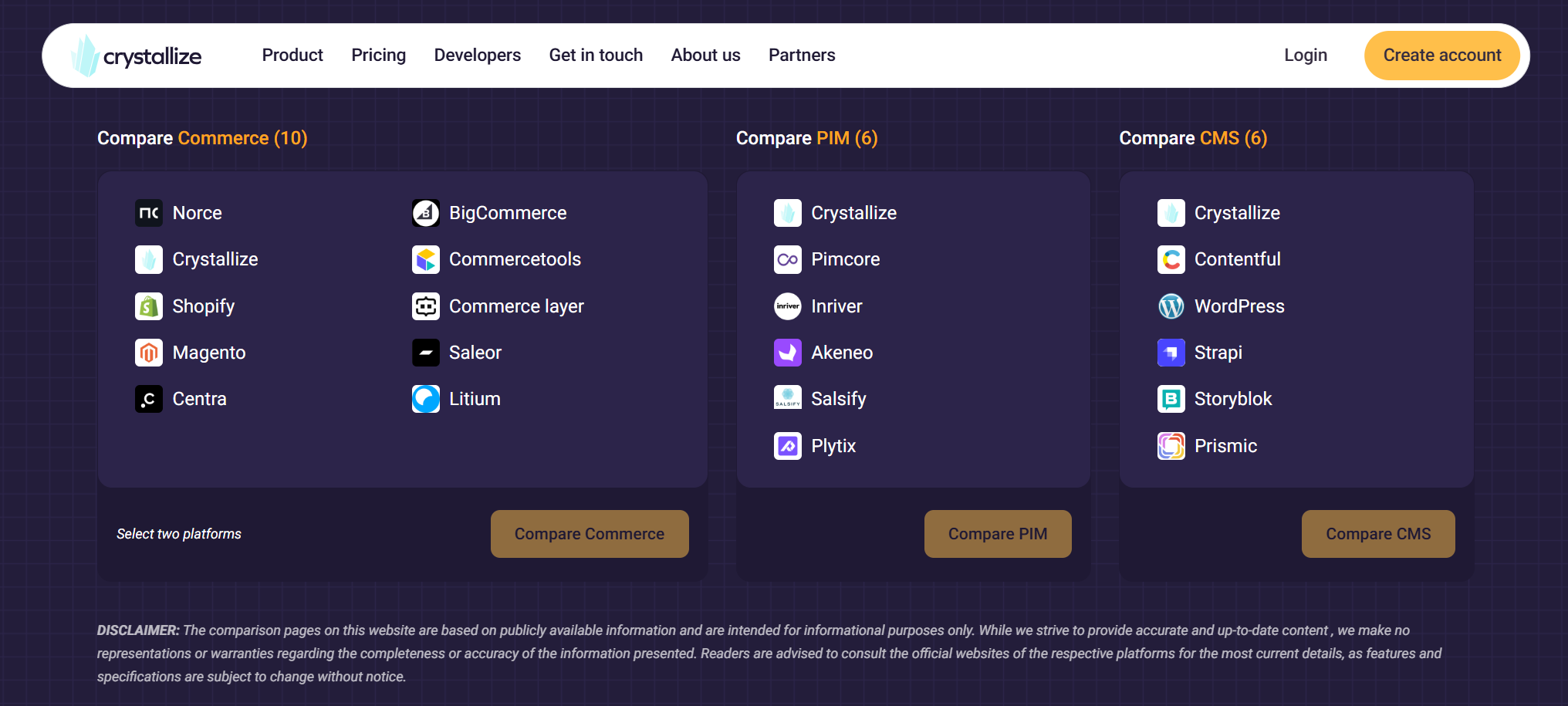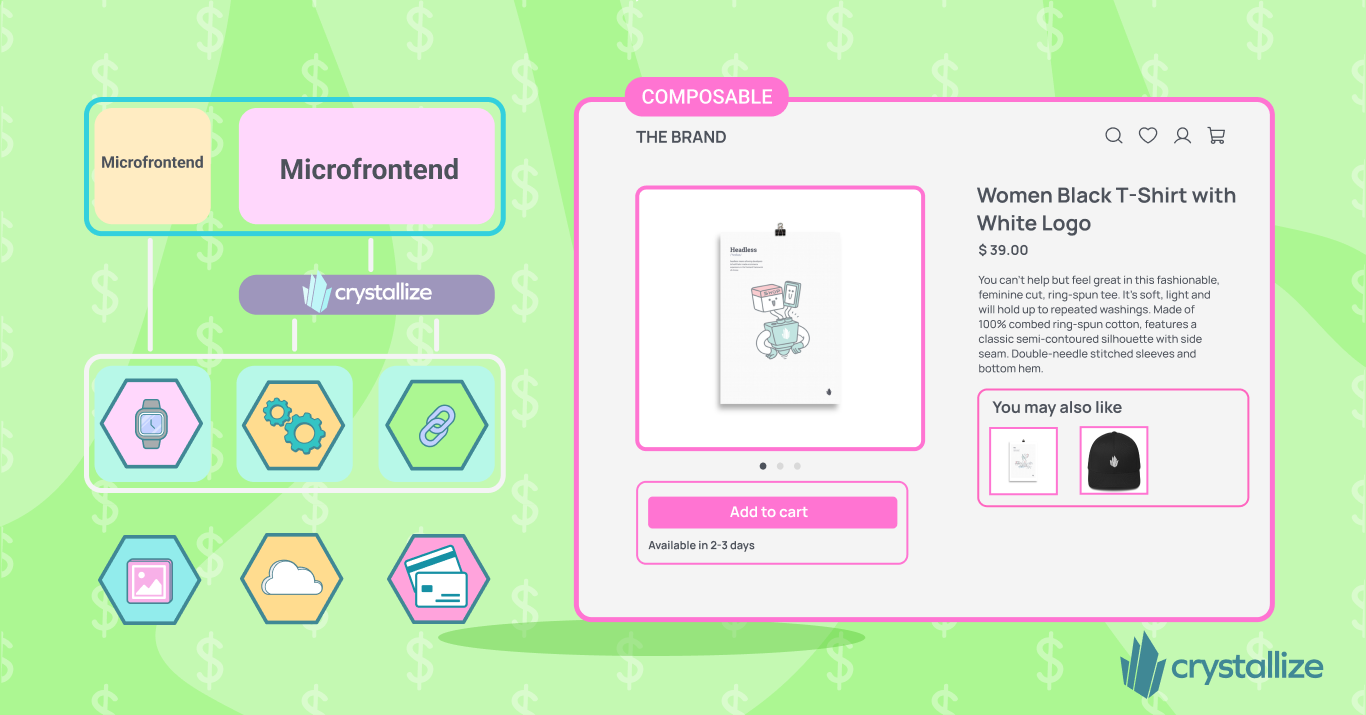Headless PIM vs. Digital Shelf Suites: A Business Comparison
Headless PIMs and digital shelf suites may look similar but solve completely different problems. This breakdown reveals the key differences brands wish they'd known before scaling channels, rebuilding front ends, or investing in omnichannel reach.

A headless PIM (Product Information Management) is essentially a centralized product data store that’s decoupled from any front-end. In other words, all product attributes, descriptions, and media live in one back-end system and are delivered via APIs to any website, app, or marketplace. Reliance on headless architecture gives marketers and developers complete flexibility to push updates everywhere at once.
By contrast, a digital shelf suite (often called a Product Experience Management, or PXM platform) is a broader toolset for managing how products appear and perform across online retail channels. It combines PIM-like data storage with built-in syndication, analytics, and content optimization. In plain terms, the digital shelf encompasses the entire online environment where your products contend for visibility and conversion. This includes all digital touchpoints: retailer websites, online marketplaces, search engine results, social media channels, and your proprietary e-commerce storefront.
Leading platforms illustrate this difference: Akeneo and Crystallize are examples of (headless) PIM systems that provide API-driven product data stores. Salsify is a unified digital shelf (PXM) suite.
Which one should you choose? I am so glad you asked. And you are on the right page. Let’s compare the trade-offs between these two approaches on speed, scalability, control, integration, and data consistency.
What Is Headless PIM?
A headless PIM is a backend service for product data, without its own front-end. Imagine it as a product data API: marketers enter and enrich catalog data in the PIM, and then any website, mobile app, or sales channel can fetch that data via API.
Built for scale, Headless PIMs centralize all product information—attributes, images, and specifications—to eliminate data silos. They are ideal for businesses looking to future-proof their product information, rapidly iterate on their front end, or expand their e-commerce channel reach.
What Is a Digital Shelf Suite?
A digital shelf suite is a more end-to-end platform focused on “winning on the digital shelf.” This concept covers every online outlet (e.g., Amazon, Walmart, Google Shopping, retailer websites, social shops, etc.) where customers browse and buy. The suite typically includes a PIM but layers on tools for syndicating content to retailers, enriching listings, and analyzing performance.
In other words, it is a central hub that not only stores product data but also pushes it out, often via pre-built connectors, to dozens or hundreds of channels.
Key Differences
Headless PIMs and digital shelf suites both speed up go-to-market, but they do it in different ways. Let’s explore those ways in more detail.
Speed to Market
Both approaches speed deployment compared to manual methods – headless PIM does so by central APIs, while digital shelf suites do so by pre-built channels and automation.
Because product data is centralized and delivered via APIs, adding or updating a product means one update in the PIM propagates everywhere. Basically, headless PIMs make it super easy for businesses to launch new sales channels (like websites, apps, or kiosks) fast, because they can just reuse the data they already have.
Digital shelf platforms also aim to accelerate launches by automating content distribution. Because such suites have built-in syndication workflows (often with templates or no-code tools), even non-technical teams can publish to many retailers at once.
Channel Scalability
In theory, headless PIMs can support any number of channels – even new or custom front-ends – because they simply expose product data via API. You can plug into an endless variety of digital touchpoints. For example, Crystallize highlights that headless PIM is perfect when you want to add e-commerce channels and quickly change your front end. The trade-off is that each new channel typically requires developer work to build the integration or UI.
Digital shelf solutions shine at mainstream channel coverage. Salsify’s network, for example, includes native connectors to major retailers and marketplaces (Shopify, Amazon, Walmart, etc.), so brands can syndicate to those channels out of the box. This means less custom coding is needed for popular channels, and you get “network effects” – retailers benefit from collaborating on the same PXM system. However, if you need a very niche channel that isn’t supported, you may have to request a connector or integrate it manually.
Overall, digital shelf suites offer quicker reach across standard channels, while headless PIMs give limitless channel options (with more build effort).
Control Over Experience
A key strength of headless PIM is flexibility. Because the PIM is purely a data service, your development team can craft any user experience on top of it. You have full control of design, personalization, and interactivity on your websites or apps. And this high control is ideal for brands wanting unique DTC experiences or complex B2B portals.
With a digital shelf platform, the emphasis is more on standardized experiences across channels. You control the product content (descriptions, images, specs) and can optimize it for each retailer, but the final shopping UI on those retailer sites is out of your hands. Many digital shelf tools offer built-in templates for creating rich product pages (enhanced content, PDFs, videos, etc.), but those still follow the platform’s structure. The trade-off is convenience vs customization: you get less fine-grained UI control, but you gain consistency and best-practice workflows.
Integration Complexity
Being API-first, headless PIMs are designed for integration – but that means you must build or use middleware for anything outside the product data model. You’ll need to connect the PIM to your e-commerce engine, CMS, ERP/CRM, and any custom front-ends. This requires developer resources and planning.
Digital shelf platforms often come with pre-built connectors and a fixed data model for common channels, reducing integration work. For example, Salsify advertises “pre-built connectors” to major e-commerce platforms and automated data feeds to retailers. This means less coding upfront, but it can also mean working within the vendor’s architecture. If you have very custom requirements or unusual data formats, you might need to build middleware or compromise on some process.
Headless PIMs give integration flexibility (at the cost of development effort), whereas digital shelf suites give integration convenience (at the cost of vendor lock-in and template constraints).
Data Consistency
Both approaches aim for data consistency; headless PIMs do it via single-source management, while digital shelf suites do it via enforced syndication standards and feedback loops.
By consolidating all product information into a single headless PIM, you eliminate discrepancies. Headless PIMs excel at complex data governance: versioning, workflows, translation, localization, etc., all occur in one place. This makes it easier to trust that the data feeding your website, mobile app, and partners is aligned.
Digital shelf platforms also emphasize consistency. They typically enforce data standards and validations before syndicating content. Many suites include automated monitoring: if a listing is incomplete or out of compliance, the system flags it.
💡The Trade-off Is Between Control vs. Convenience
Headless PIMs (like Crystallize or Akeneo) offer maximum flexibility for building custom, future-proof experiences by exposing an API-first product database. They can scale to any channel or format you code.
Digital shelf suites (like Salsify) package that PIM capability with built-in connectors, analytics, and channel-specific features. They let you “get to market faster” across dozens of retailers by automating syndication and optimization.
So what does this mean for you? Well, choose a headless PIM when you need tight control (e.g., highly unique UIs, deeply custom data models, advanced headless setups). Choose a digital shelf suite when you need quick omnichannel reach and more hands-on optimization for marketplaces.
👉 If you want a deeper breakdown of PIM vs. digital shelf suites and how Crystallize compares to both categories (alongside of commerce and CMS platforms) you can explore our comparison hub here.

Use Cases
Companies selling complex products (like industrial parts, electronics, or custom solutions) often have thousands of attributes, variants, and rules. A headless PIM shines here because it can model rich hierarchies and workflows. For example, a manufacturer selling to distributors can build a custom order portal with unique pricing by pulling all specs from the PIM via API. As one analyst notes, a connected PIM is key to accelerating B2B growth and collaboration between suppliers and buyers. Similarly, any organization with frequent product changes or aggressive personalization (e.g., many variants for different regions or customer segments) can push updates instantly through a headless PIM.
Direct-to-consumer brands often launch new SKUs or limited-edition lines quickly and need fresh content (blogs, videos, 3D models, etc.). Headless PIMs allow marketers to enrich and repurpose content freely. Because you’re not tied to a fixed template, your developers can craft any interactive experience (AR/VR viewers, quizzes, etc.) that consumes the PIM data. This agility keeps the brand’s own website and apps at the cutting edge. An example use case is a D2C fashion or consumer-tech brand using a headless PIM to feed both its e-commerce site and mobile app in parallel, with frequent content updates managed centrally and pushed to both sites.
Brands selling through many retailers (supermarkets, drugstores, big-box chains, e-commerce marketplaces) benefit hugely from a digital shelf approach. Omnichannel retail and CPG, for example, rich media and correct specs are critical on Amazon, Walmart, Instacart, etc. A digital shelf suite can push the right content formats to each retailer and track performance. It’s also ideal for franchise or distributor networks where multiple resellers need aligned content. For instance, a food or beverage manufacturer might use Salsify’s syndication network to automatically update product listings across 200 retail partners whenever a recipe or label changes.
Any brand focused on maximizing search and conversion on third-party sites will use digital shelf analytics. The suite’s monitoring tools (e.g., search rank tracking, content completeness scores) provide action items: improve images, tweak keywords, localize descriptions per marketplace, etc. This is a big advantage for industries like electronics or cosmetics, where product discoverability drives sales. In short, if your business depends on winning in retail partner channels (and not just your own site), a digital shelf suite is the weapon of choice.
Key Takeaways
- Speed: Headless PIMs accelerate launches by updating data once via API. Digital shelf suites accelerate rollout by automating feeds to many channels.
- Scalability: Headless PIMs scale to any new channel if you build the integration. Digital shelf suites scale quickly across standard retail networks via pre-built connectors.
- Control: Headless PIMs give complete UI and data flexibility for custom experiences. Digital shelf suites give guided, best-practice experiences optimized for each channel but with less design freedom.
- Integration: Headless PIMs require more custom development (APIs to front-ends, ERPs, etc.), while digital shelf suites offer many out-of-the-box connectors and workflows.
- Consistency: Both ensure one source of truth. A headless PIM enforces consistency through centralized data management; a digital shelf suite enforces it through standardized syndication and monitoring.
Headless PIMs (Akeneo, Crystallize) are ideal when you need maximum flexibility for complex B2B catalogs or a feature-rich DTC storefront. Digital shelf suites (Salsify) excel when you need to rapidly syndicate high-quality content across omnichannel retail and optimize every listing.
In the end, the right choice comes down to your priorities: maximum control and flexibility with a headless PIM, or fast, scalable retail reach with a digital shelf suite.
If you’re unsure which path fits your business, reach out. Let us show you how Crystallize can help your business grow.
CLICK HERE and set up a personal 1-on-1 Crystallize demo. We’re happy to walk through your use case and help you choose the best-fit architecture.
Alternatively, why not SIGN UP for FREE, try Crystallize, and get our team's unparalleled support to help you get going?

